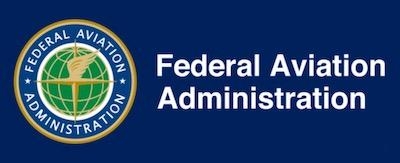Thu, Apr 04, 2019
Non-Equipped Aircraft Will Be Considered For Clearances On A Case-By-Case Basis, But It Won't Be Easy
The FAA has placed a notice in the Federal Register regarding its policy for issuing air traffic control (ATC) authorizations to persons seeking to operate aircraft that are not equipped with Automatic Dependent Surveillance-Broadcast (ADS-B) Out equipment in ADS-B airspace after Jan. 1, 2020.

The policy statement merely implements a provision in the 2010 rule regarding ATC authorizations and does not create any new requirement or burden on operators. The ADS-B Out final rule issued in 2010 requires aircraft flying in certain controlled airspace to be equipped with ADS-B avionics that meet the prescribed performance standards after Jan. 1, 2020.
In issuing the rule, the agency recognized that operators who do not routinely operate in the specified airspace might need to do so on rare occasions. ATC authorizations to deviate from the equipage requirement were established in the regulation to address these instances. These per-operation authorizations are not intended to support routine operations of non-equipped aircraft in airspace covered by the rule. The FAA noted in the final rule that authorizations would be considered on a case-by-case basis and might not be granted in all instances. The FAA anticipates that operators who routinely fly in airspace covered by the ADS-B rule are taking the necessary steps to equip in order to ensure there is no disruption to their operations.
The FAA does not plan to grant authorization requests for routine flights from scheduled operators seeking to fly non-equipped aircraft in rule airspace.
Operators who want to fly in airspace covered by the rule but are not equipped with ADS-B Out avionics must request and obtain preflight authorization. The request must be made at least one hour before the proposed operation. An operator who flies a non-equipped aircraft in ADS-B airspace without obtaining a preflight authorization will be presumed in violation of the regulations.
The agency will not issue in-flight authorizations to operators of non-equipped aircraft, and ATC facilities will not accept requests for authorizations by telephone. An ATC clearance does not constitute an authorization.
If an authorization request is not approved prior to departure, the operator should assume the authorization is denied. It is highly unlikely that authorizations will be approved for airspace at busy airports where capacity is constrained. Others reasons for which authorizations may not be granted include workload, runway configurations, air traffic flows and weather conditions.
(Source: FAA news release)
More News
Airbus Racer Demonstrator Makes Inaugural Flight Airbus Helicopters' ambitious Racer demonstrator has achieved its inaugural flight as part of the Clean Sky 2 initiative, a corners>[...]
A little Bit Quieter, Said Testers, But in the End it's Still a DA40 Diamond Aircraft recently completed a little pilot project with Lufthansa Aviation Training, putting a pair of >[...]
Line Up And Wait (LUAW) Used by ATC to inform a pilot to taxi onto the departure runway to line up and wait. It is not authorization for takeoff. It is used when takeoff clearance >[...]
Contributing To The Accident Was The Pilot’s Use Of Methamphetamine... Analysis: The pilot departed on a local flight to perform low-altitude maneuvers in a nearby desert val>[...]
From 2015 (YouTube Version): Overcoming Obstacles To Achieve Their Dreams… At EAA AirVenture 2015, FedEx arrived with one of their Airbus freight-hauling aircraft and placed>[...]
 Airbus Racer Helicopter Demonstrator First Flight Part of Clean Sky 2 Initiative
Airbus Racer Helicopter Demonstrator First Flight Part of Clean Sky 2 Initiative Diamond's Electric DA40 Finds Fans at Dübendorf
Diamond's Electric DA40 Finds Fans at Dübendorf ANN's Daily Aero-Term (04.23.24): Line Up And Wait (LUAW)
ANN's Daily Aero-Term (04.23.24): Line Up And Wait (LUAW) NTSB Final Report: Extra Flugzeugbau GMBH EA300/L
NTSB Final Report: Extra Flugzeugbau GMBH EA300/L Classic Aero-TV: 'Never Give Up' - Advice From Two of FedEx's Female Captains
Classic Aero-TV: 'Never Give Up' - Advice From Two of FedEx's Female Captains



